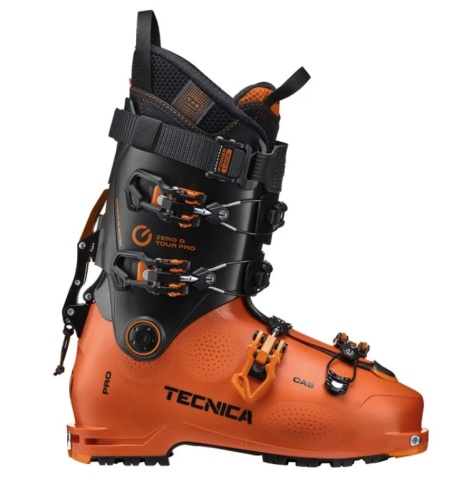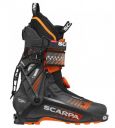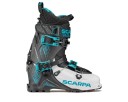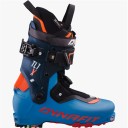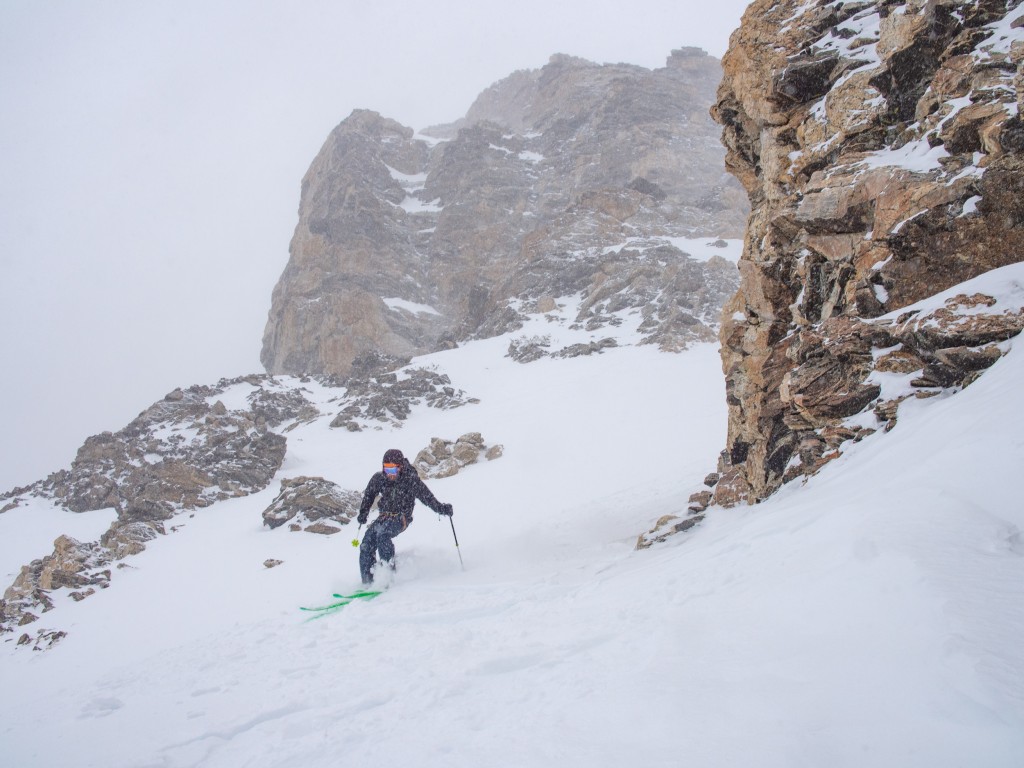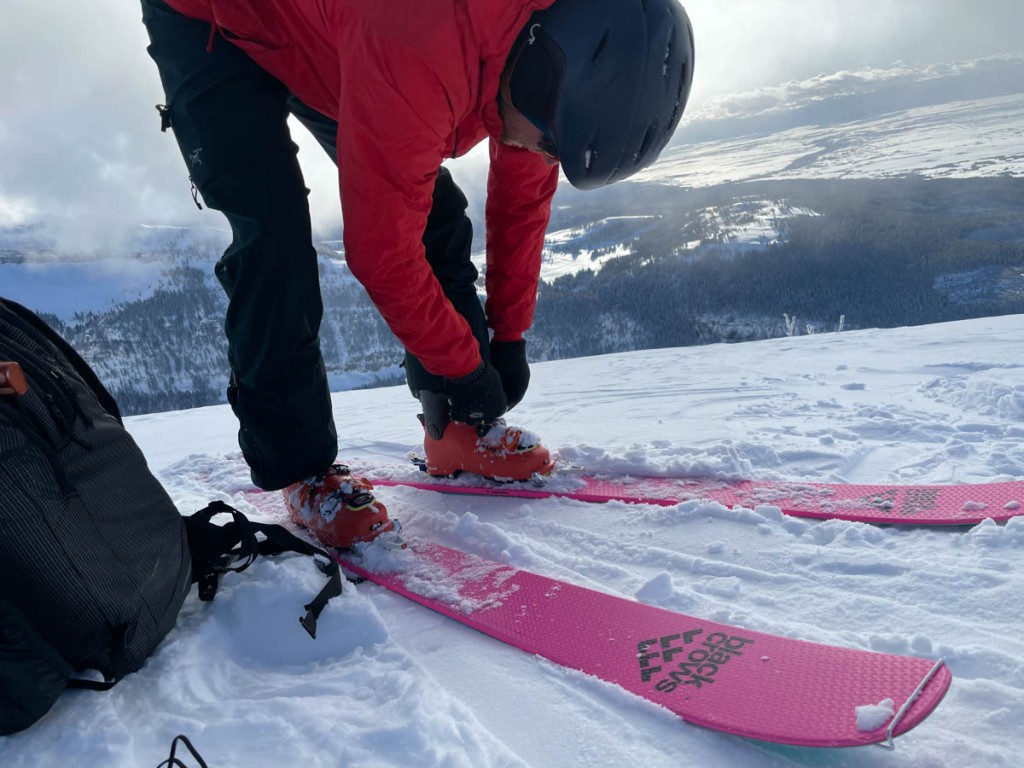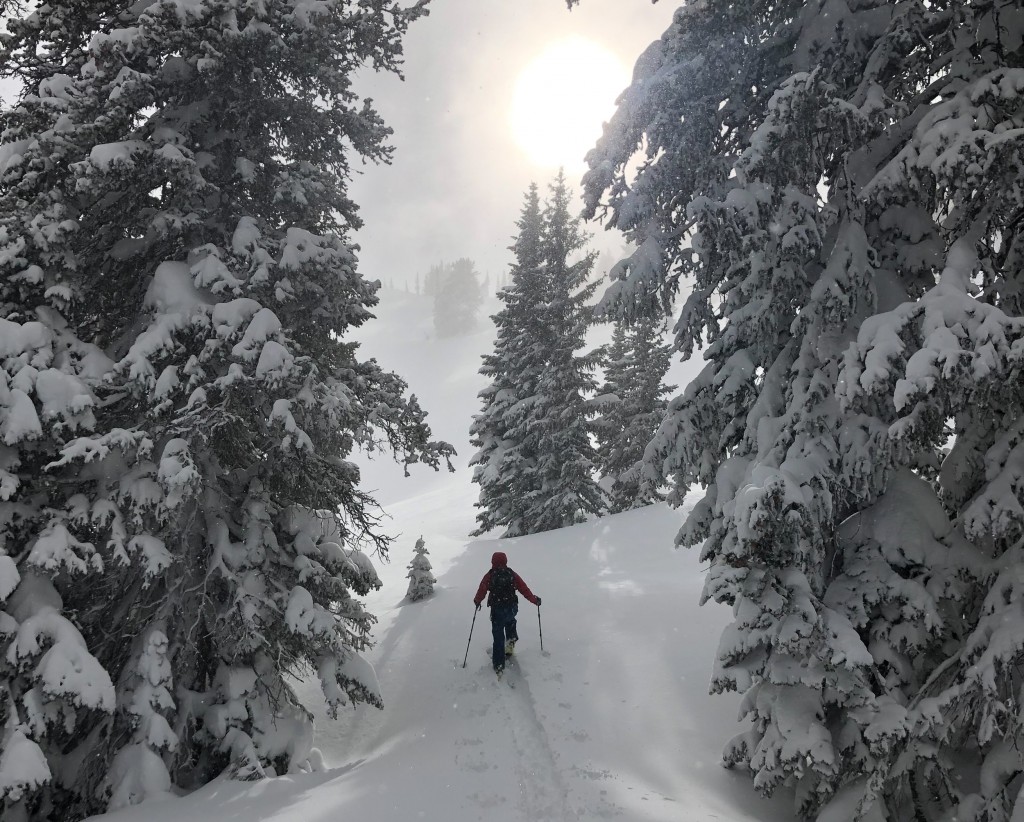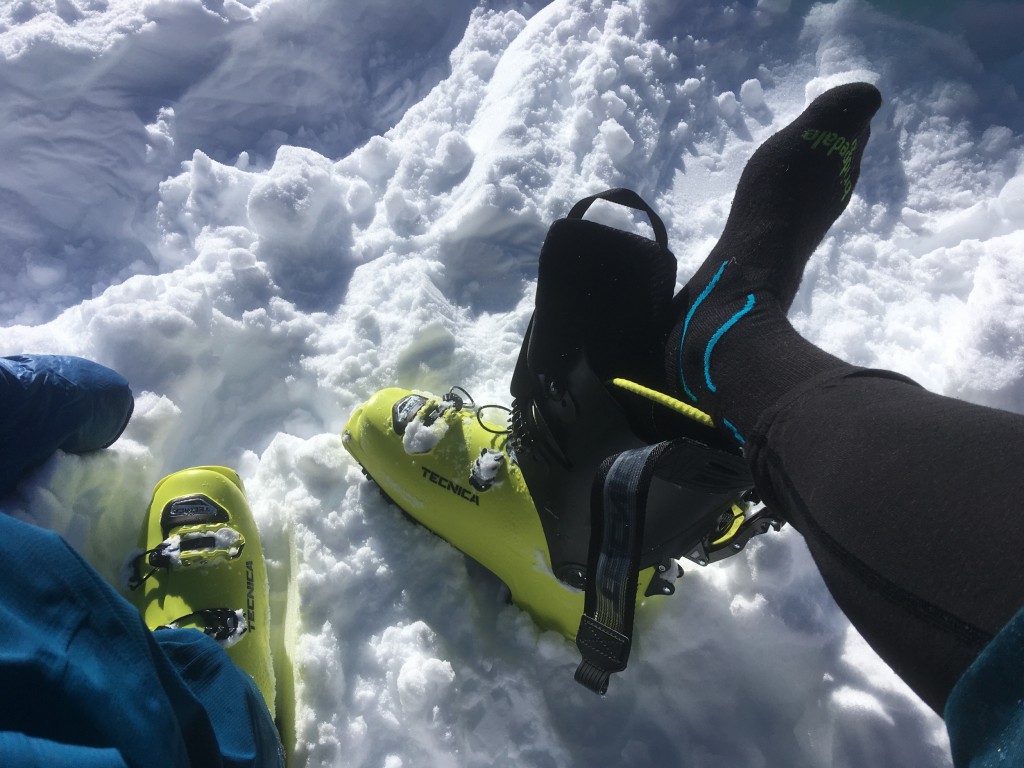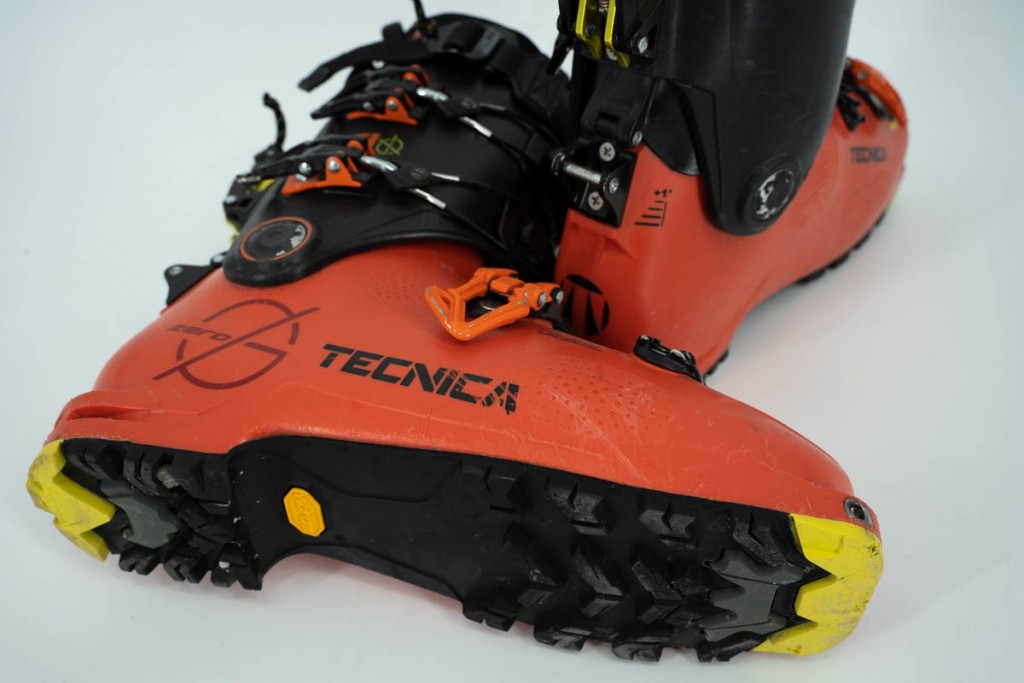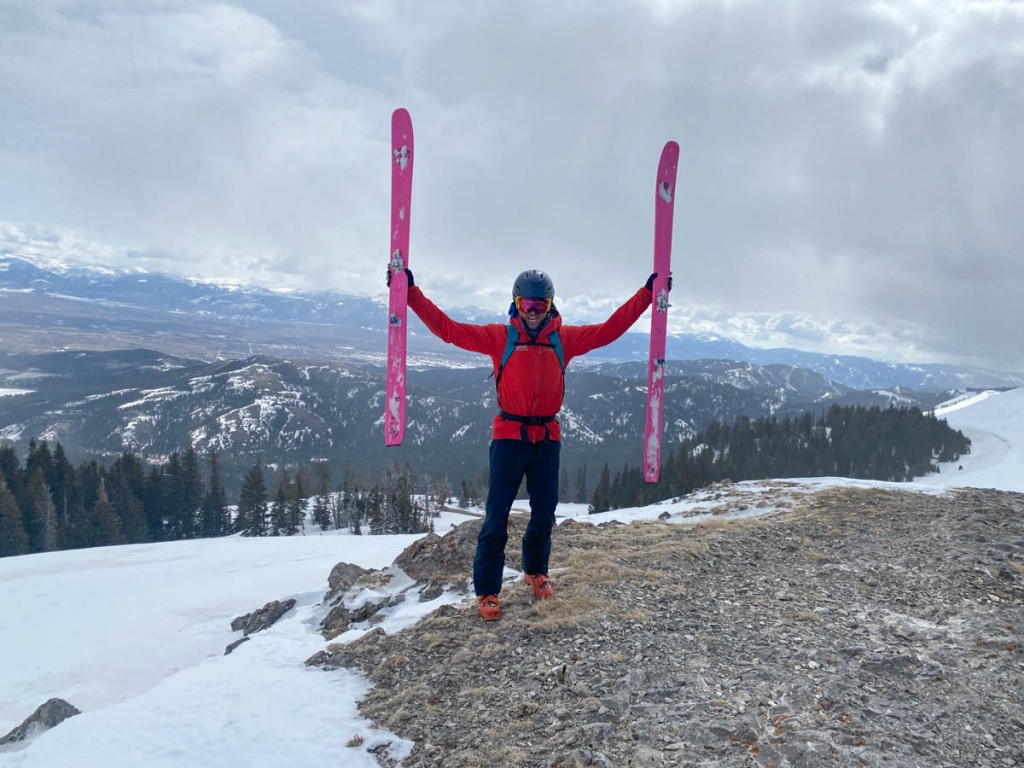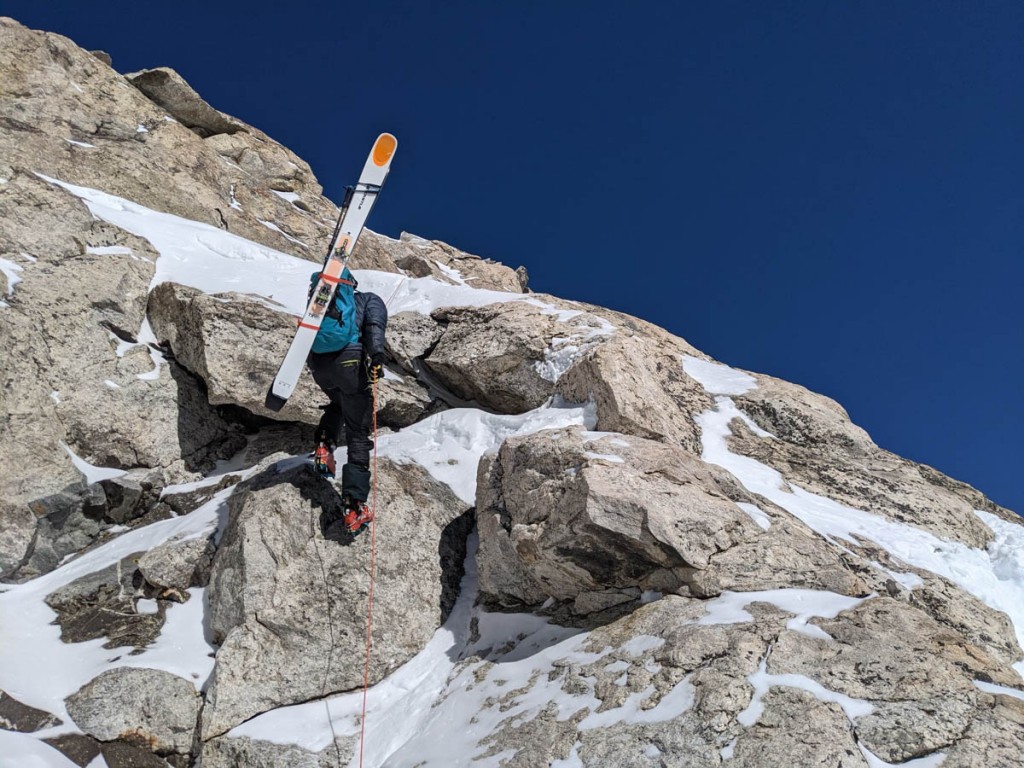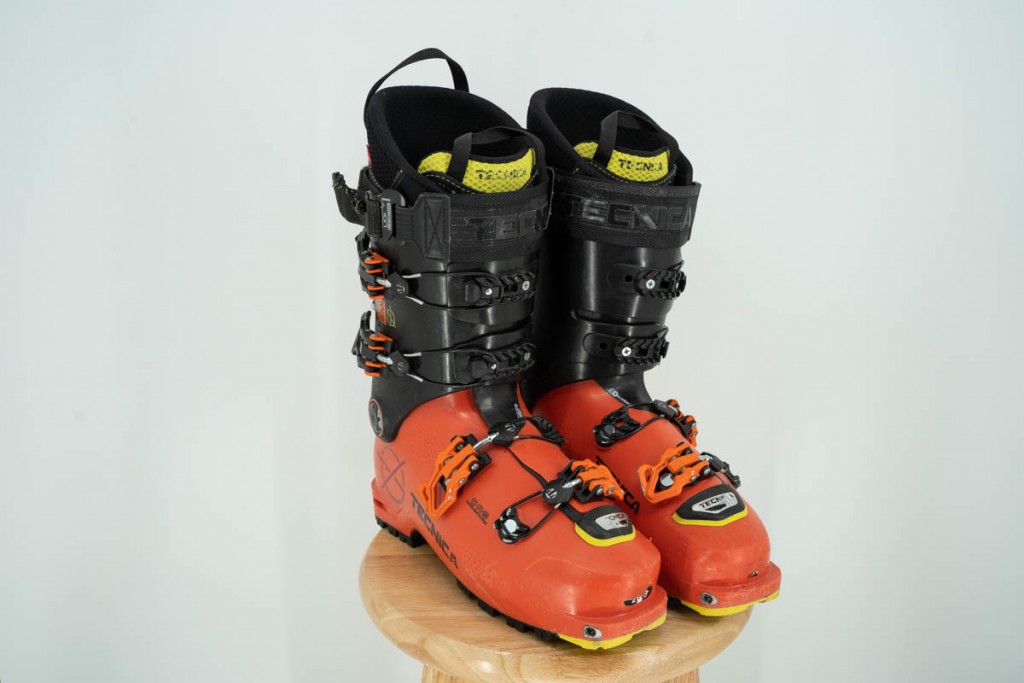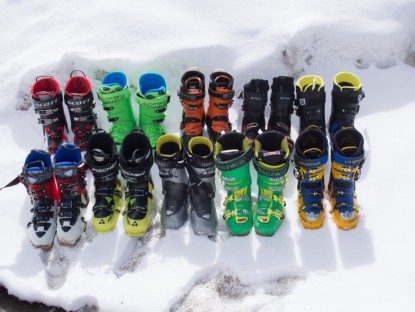Tecnica Zero G Tour Pro Review
Our Verdict
Compare to Similar Products
 This Product
Tecnica Zero G Tour Pro | |||||
|---|---|---|---|---|---|
| Awards | Best All-Around Backcountry Ski Boot | Best Lightweight Backcountry Ski Boot | Best Bang for the Buck | Top Pick for Fast and Light Missions | Best Hybrid Touring Boot |
| Price | $899.95 at REI Compare at 4 sellers | $949.00 at REI Compare at 2 sellers | $949.00 at REI Compare at 3 sellers | $499.95 at Backcountry Compare at 2 sellers | $384.99 at Evo Compare at 3 sellers |
Overall Score  |
|||||
| Star Rating | |||||
| Bottom Line | This is an excellent ski boot that quietly entered the market and crushes the competition | For all-around skiing with a light and fast preference, this is a great choice | Well-balanced AT ski boot performance at a reasonable price point and with a fit that favors comfort and accommodates average to high volume feet | The best boots we know of that weigh around one kilogram and enable a one-move transition between tour and ski mode | Excellent for short climbing sessions interspersed with largely mechanized access backcountry skiing |
| Rating Categories | Tecnica Zero G Tour... | Scarpa F1 LT | Scarpa Maestrale RS | Dynafit TLT X | Lange XT3 120 |
| Downhill Performance (35%) | |||||
| Uphill Performance (20%) | |||||
| Weight (20%) | |||||
| Comfort and Fit (10%) | |||||
| Warmth (10%) | |||||
| Ease of Use (5%) | |||||
| Specs | Tecnica Zero G Tour... | Scarpa F1 LT | Scarpa Maestrale RS | Dynafit TLT X | Lange XT3 120 |
| Weight per Pair (Size 26.5) | 5 lbs 13 oz | 4 lbs 7 oz | 6 lbs 5 oz | 4 lbs 11 oz | 7 lbs 11 oz |
| Weight of One Boot Shell | 1119 g | 0809 g | 1180 g | 0867 g | 1398 g |
| Weight of One Stock Liner, No Footbed | 204 g | 214 g | 252 g | 190 g | 352 g |
| Weight of One Complete Boot, No Insole | 1323 g | 1023 g | 1432 g | 1057 g | 1750 g |
| Range of Motion (degrees) | 55° | 72° | 60° | 65° | 34° |
| Binding Compatibility? | Tech and DIN AT | Tech only | Tech and DIN AT | Tech only | Tech, DIN AT, Grip Walk |
| Stated Flex Index | 130 | 95 | 125 | Not reported | 120 |
| Manufacturer Stated Last Width | 99 mm | 102 mm | 101 mm | 101 mm | 100 mm |
| Liner Design | Wrap | Tongue | Tongue | Tongue | Wrap |
| Shell material | Grilamid | Grilamid, Carbon core | Carbon Grilamid | Grilamid | Polyurethane |
Our Analysis and Test Results
After an initial effort at backcountry boots that kind of fell flat, Tecnica really stepped it up back with the Zero G Tour Pro. At first glance, this boot “looks” just like other efforts from major boot manufacturers; take your typical resort-optimized, wrap-constructed, all-mountain ski boot and slap a walk mode and tech fittings in it. In recent years, nearly all ski boot manufacturers have made a stab at this product sub-category. The results have been varied. We have really enjoyed skiing these modified overlap boots downhill. All, though, suffered on the uphill. Tecnica really stepped up the game and is offering a boot that will have very wide appeal. It strikes the ski-to-tour performance balance as well as anything on the market, at a weight that is virtually unbelievable. Overlap boots of just a couple years ago worked hard to get down to 7.5 pounds.
A pair of Zero G Tour Pro shoes is exactly six pounds (1323g per foot). This boot destroys convention with downhill performance around double that of boots of 5 years ago in this weight range. That Tecnica does this in a boot that “looks” normal (overlap construction, four buckles, power strap, external rear walk mode) is unheard of. It might sound shallow to comment on how the boot “looks”. However, familiarity goes a long way toward a skier's comfort and performance, and this boot will be familiar-looking to life-long skiers. We like that because we know you will like it.
We have now tested the Tour Pro in two different generations. The only change is in color. Performance and fit are unchanged. Our photos reflect the variety of testing. Understand that all we have found with either color of the boot applies to the other color.
Performance Comparison
Uphill Performance
The bulk of your backcountry skiing day goes against gravity. To do so, efficiently, you need low weight and effortless ankle mobility. We assess weight independently (below) and comment here on ankle mobility. We assess both absolute range of motion and friction within that range of motion. We make (or used to make…) some generalizations about boot construction and uphill performance; “Overlap” (or "two-piece") ski boots go down better and uphill more poorly than “tongue” (or "three-piece") boots. Up until this product our generalizations were largely fair. Recent additions mix this all up. The Zero G is the best touring overlap boot we have ever used. It tours better than many tongue-style boots. The range of motion is more than most ankles and the friction is low enough to drive a stick shift wearing them.
These tour better than all but the most uphill-focused boots in our review. For the downhill performance, they tour amazingly well. This Tecnica has recalibrated our understanding of what sort of uphill-to-downhill balance is possible.
Weight
Again, these boots would have been the lightest “performance” ski boots on the market just a few years ago. 1300 grams (one foot, shell, and liner together) is totally reasonable to lug around on the most severe of ski mountaineering endeavors. You can go lighter, of course. However, go any lighter and downhill performance takes a huge step down. On the other hand, you can go quite a bit heavier than the Tour Pro and not yet gain better downhill performance.
Around 1300 grams is the retinue of solidly “all around” backcountry ski boots. This is roughly the same as many proven and established boot models. It has long been a goal to get high performance from this amount of mass. With other boots at this weight (current and past), though, you get either finicky use or poorer downhill ski performance. Just because we go on and on about the performance-to-weight ratio of the Zero G Tour Pro, don't overlook the efficiency gains of going even lighter. Lighter boots also have less cuff/ankle interference on the way uphill.
Downhill Performance
We go backcountry skiing for the down. We all want something different from our downhill experience, though. If you ever want high speed or high stability on your downhill legs (or if your downhill skills are something less than "expert"), don't settle for performance less than what is offered by the Zero G Tour Pro. The performance is tuned to be just stiff enough to drive big skis to go really fast. The lateral flex is solid, and the forward flex is progressive and smooth. As compared to heavier boots, the rearward support of the Tecnica is certainly less. Ski centered and balanced, and this shouldn't be an issue. Get sloppy and in the back seat, and the Tecnica will lightly punish you for the indiscretion. Otherwise, they ski exceptionally well.
At this weight, no boots ski downhill better. Tack on a few ounces for certain models, and you get a small but noticeable improvement in downhill performance. This bump in performance is real but not huge. Some might not notice it at all. And it comes at the cost of weight, cuff friction/range, and possibly some fiddle factor.
Comfort and Fit
We have been able to get multiple feet into these boots, making direct comparisons of unaltered AT ski footwear. As compared to our entire spectrum of tested boots, we found that the Tecnica Zero G Tour Pro is exactly average in fit. It sits squarely in the middle. The liner is about average too. Some have softer foam (offering greater initial “shelf appeal” but compromised durability and fewer customizable fit options), while others are stiffer (all around better, after initial in-shop trial).
Fit is so subjective. For most, a comfortable fit requires the assistance of a professional and their modifications. Aside from the above rough generalizations, we hesitate to offer comparisons and suggestions. Try things on and know that excellent boot fitters can work near miracles. The lucky skier is one that can ski his or her boots “right out of the box”.
Warmth
Backcountry skiing takes place in cold settings and environments; so few other comments on the insulation of ski boots is peculiar. In our testing, we've found that there is a wide range of insulation value in ski boots. As boots get more and more specialized and lighter, insulation value changes even more. To accomplish all the great things enumerated above, Tecnica has slimmed down the plastic and the liner material of the Zero G Tour Pro. The result is lowered insulation value. These are among the less insulating boots in our test.
If you have chronically cold feet or ski in particularly cold climates, proceed cautiously. The Tecnica can be pressed into expedition or super cold use with careful fitting and intentional accessorizing. They will never be as warm as something thicker, though.
Ease of Use
In use, the Zero G Tour Pro uses a proven formula. The four buckles, power strap, and rear, external ski/walk mode are simple, familiar, and reliable. You have to make four moves at every transition, but this is the case for almost all average to high-performance AT ski boots. The ski/walk mode locks securely, even when moderately iced up. All overlap boots are tougher to get in and out of than tongue boots.
The Tecnica is reliable and familiar. Other comparable boots employ all sorts of innovative and experimental usability attributes. Tecnica somehow steered clear of gimmicky and “experimental” usability attributes. These top award winners use familiar buckles, have all the moving parts visible and clear, and are compatible with bindings and crampons in “normal” fashion. Sure, you can get used to the quirks of more “innovative” equipment, but why bother when this Tecnica is so good and reliable and familiar?
Should You Buy the Technica Zero G Tour Pro?
There was a time not that many years ago when all top-of-the-line AT ski boots edged over $1000. We are thankful that that time is past. The Tecnica Zero G Tour Pro isn't inexpensive, but they are in line with trends that have brought the upper limit of AT ski boot prices down. The flip side of this equation is that budget ski boots are harder to find. You can't save hundreds of dollars by compromising a little on your ski boots. You're going to spend a pretty similar amount on basically any modern AT ski boots.
What Other Backcountry Ski Boots Should You Consider?
The Zero G Tour Pro nails the ski touring and ski mountaineering sweet spot. The good news is that AT ski boots are so good these days that even if you need to save some cash by opting for a better value like the Scarpa Maestrale RS, that you really aren't stepping too far down the ladder. While the Maestrale RS and Zero G Tour Pro ski similarly, if you'd rather opt for a lighter-weight boot that enhances uphill performance, it's worth considering either of these boots against the Scarpa F1 LT.


